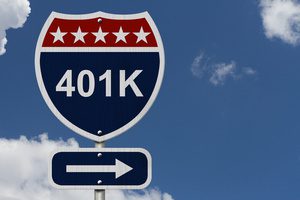 “Can I unlock my 401(k) account while I am working?” This is a frequent question in the world of financial retirement planning. Saving money in a 401(k) retirement plan does offer benefits, but some people find it unfavorable. One challenge which investors may face is a lack of flexibility with their 401(k) account. For instance, if they want to invest their retirement money, they are often stuck with their company’s plan.
“Can I unlock my 401(k) account while I am working?” This is a frequent question in the world of financial retirement planning. Saving money in a 401(k) retirement plan does offer benefits, but some people find it unfavorable. One challenge which investors may face is a lack of flexibility with their 401(k) account. For instance, if they want to invest their retirement money, they are often stuck with their company’s plan.
Then there is the challenge of other 401(k) downsides, including control over money. Generally speaking, retirement savers don’t have the ability to move money out of their accounts unless certain circumstances are in place, these include:
- Moving onto a new job
- Retiring from the workplace
- Getting divorced
- Becoming completely disabled
401(k)s do permit withdrawals. But if certain circumstances hold, the withdrawals may be subject to income taxation and a 10% penalty. To extend employee incentives, some companies offer contribution-matching opportunities. Investors taking advantage of this may be hesitant to unlock their 401(k) if it meant their savings incentive could be compromised.
What if there was a way in which a 401(k) account could be unlocked without penalty – or without losing their employer-matching incentive? There is, and it’s called an In-Marriage QDRO (In-Marriage Qualified Domestic Relations Order). Let’s cover some of the fundamentals behind this exclusive, not-known-to-many In-Marriage QDRO strategy.
Steps to Consider if Not Divorcing
- Consult a Financial Advisor: A financial advisor can help you explore all available options for accessing your 401(k) funds and plan the most tax-efficient strategy.
- Review Plan Documents: Understand the specific provisions of your 401(k) plan, including rules around loans, hardship withdrawals, and in-service distributions.
- Evaluate Alternatives: Consider other sources of funds or financial strategies that may be less costly or have fewer long-term impacts on your retirement savings.
While a QDRO is a powerful tool in the context of divorce or legal separation, accessing 401(k) funds for other reasons requires careful consideration of the potential tax implications and penalties. Always consult with professionals to make informed decisions.
In-Marriage QDRO: Strategy to Unlock Your 401(k)
 To be clear, the 401(k) question isn’t a small one. According to the Department of Labor, over 638,000 defined-contribution plans are in the United States, of which 80.4% make up 401(k) plans. There are 88.7 million total plan participants in the U.S., of whom 73.7 million workers are active participants.
To be clear, the 401(k) question isn’t a small one. According to the Department of Labor, over 638,000 defined-contribution plans are in the United States, of which 80.4% make up 401(k) plans. There are 88.7 million total plan participants in the U.S., of whom 73.7 million workers are active participants.
The in-marriage QDRO strategy has sat in the ERISA code for over 35 years. Formally speaking, the ERISA code refers to the Employment Retirement Income Security Act, which was enacted in 1974 and upon which many retirement advice rules are based. An in-marriage QDRO is also known as a 401(k) in-marriage QDRO.
After careful review, experienced ERISA-law attorneys found a strategy which lets investors move present funds from their current 401(k) account without taxes or a 10% penalty. Moreover, they can retain their employer-matching incentive and still have the ability to fund their 401(k). The net result is this in-marriage QDRO strategy can give retirement savers more control over their money and more flexibility in retirement advice guidance.
In-Marriage QDRO Rollover Basics
An in-marriage QDRO is not a hardship provision, an in-service withdrawal provision, or a loophole. It’s a mechanism to unlock your 401(k) which sat undiscovered for years, until recently. Using this strategy, people can gain more control over their investments and spurn more flexibility in their retirement-savings accounts.
To reinforce, whether this strategy is appropriate for you will depend on your personalized financial profile. Just like with any strategy, it should be well-aligned with your time horizon, financial situations, needs, objectives, and other personalized variables. If you would like to discuss whether this might be an option for you, SafeMoney.com can connect you with financial professionals who have training and resources in this 401(k) unlock strategy.
If you’re seeking tailored guidance, consider consulting a financial professional. Visit our “Find a Financial Professional” section to connect directly. For a personal referral to an independent, licensed advisor, call us at 877.476.9723 or contact us here to book your first appointment.








